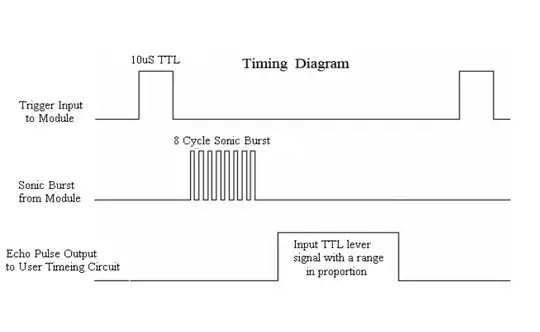I have code for an ultrasonic sensor which I found from a site. Here is the code:
#define trigPin 12
#define echoPin 13
void setup() {
Serial.begin (9600);
pinMode(trigPin, OUTPUT);
pinMode(echoPin, INPUT);
}
void loop() {
int duration, distance;
digitalWrite(trigPin, HIGH);
delayMicroseconds(1000);
digitalWrite(trigPin, LOW);
duration = pulseIn(echoPin, HIGH);
distance = (duration/2) / 29.1;
if (distance >= 200 || distance <= 0){
Serial.println("Out of range");
}
else {
Serial.print(distance);
Serial.println(" cm");
}
delay(500);
}
However, I don't understand the work of pulseIn() function. I mean, I want to know when the time count starts and when it ends. For example, in this code, does the time start at digitalWrite(trigPin, HIGH); or does the time start at the pulseIn() function?
If it's the second one, when it stops, then how does the time give us the distance of an obstacle when I am already delaying 1000 microseconds after I send a ping in air?
